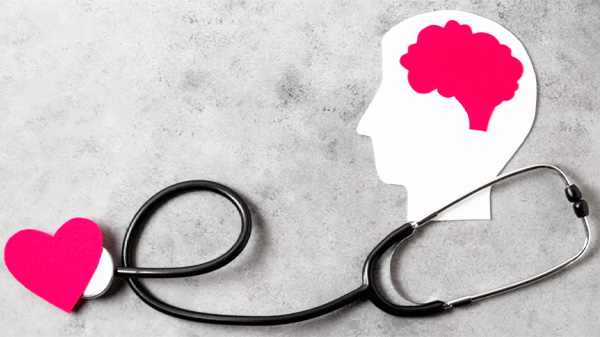Cerebral Haemorrhage: Signs, Reasons, Treatment, and Prevention

- Update Time : Saturday, 30 March, 2024, 03:21 pm
- 116 Time View

Online Desk: Cerebral haemorrhage is often referred to as intracerebral haemorrhage (ICH) or hemorrhagic stroke. It is a critical medical condition characterised by bleeding within the brain tissue. This condition requires immediate medical attention. This article delves into some basic knowledge about ICH to ensure proper diagnosis and treatment.
What is Cerebral Haemorrhage?
Cerebral haemorrhage or ICH, is a type of stroke that occurs when a blood vessel in the brain bursts and bleeds into the surrounding brain tissue. This bleeding disrupts the blood supply to the brain and damages brain cells.
According to research, cerebral haemorrhage is the second most common cause of stroke. Research also shows that ICH is the deadliest type of stroke, with a mortality rate of around 40%-50% within the first month.
Types of Cerebral Haemorrhage
Intraparenchymal Haemorrhage
Intraparenchymal haemorrhage (IPH) is a type of bleeding that occurs within the brain tissue. According to Wikipedia, IPH is the most common type and accounts for around 8-13% of all strokes and can arise from various underlying conditions. IPH may lead to death or significant disability This is why it is an urgent medical situation requiring immediate attention.
Intraventricular Haemorrhage
Intraventricular haemorrhage (IVH) is caused by bleeding in the ventricles, which are fluid-filled cavities in the brain. These produce and circulate cerebrospinal fluid, a protective cushion for the brain and spinal cord. It can arise from physical trauma or as a result of a hemorrhagic stroke.
According to Wikipedia, around 30% of IVH cases are primary, while 70% are secondary. It has been observed that IVH occurs in approximately 35% of moderate to severe traumatic brain injuries. Consequently, IVH typically accompanies extensive associated damage, leading to unfavourable outcomes in most cases.
Reasons
Head Trauma
Head injuries from accidents or falls can damage blood vessels in the brain. It may lead to brain haemorrhage in individuals under the age of 50.
High Blood Pressure
Untreated hypertension can weaken blood vessel walls. It increases the likelihood of a brain haemorrhage.
Aneurysm
Abnormal bulges in blood vessel walls are known as aneurysms, which occur when blood vessel walls weaken and swell. It potentially leads to a burst and subsequent brain bleeding and can result in a stroke.
Blood Vessel Abnormalities
Arteriovenous malformations (AVMs) cause weakness in blood vessels in and around the brain, often only detected when symptoms arise.
Amyloid Angiopathy
This blood irregularity is typically seen in older adults with high blood pressure. It can lead to small unnoticed bleeds that may eventually result in a larger brain haemorrhage.
Blood Disorders
Conditions like haemophilia and sickle cell anaemia contribute to lower blood platelet levels and clotting. These increase the risk of brain bleeds.
Blood Thinner
While essential for some conditions, blood thinners can increase the risk of bleeding, including cerebral haemorrhage.
Liver Disease
People with liver conditions have an elevated risk of bleeding issues, including brain haemorrhage.
Brain Tumours
Individuals with a history of brain tumours are at a heightened risk of developing cerebral haemorrhage.
Symptoms and Signs
Symptoms of cerebral haemorrhage may include:
Sudden and severe headache
Nausea and vomiting
Weakness or paralysis on one side of the body
Difficulty speaking or understanding speech
Vision problems
Loss of consciousness
Seizures
Dizziness
Loss of coordination
Difficulty balancing
Abnormal sense of taste
Difficulty swallowing
Difficulty writing or reading
Loss of fine motor skills
How to Diagnose, Treatment
To diagnose a brain bleed, a healthcare provider conducts an immediate physical and neurological examination, alongside reviewing the patient’s medical history and symptoms. Following this, they may order imaging tests such as a CT scan, MRI, or MRA to assess the location, extent, and potential cause of the bleeding.
Additional tests, including an electroencephalogram, chest X-ray, urinalysis, complete blood count (CBC), eye exam, lumbar puncture (spinal tap), or angiography, may also be utilised to detect underlying causes.
The treatment for a brain bleed varies depending on the severity and location of the bleed. Healthcare providers strive to halt the bleeding and tackle the root cause. Treatment options may encompass surgery and medication.
Prompt medical intervention can minimise brain damage, enhancing the prospects of recovery. Additionally, patients may receive supplemental oxygen through a ventilator, nutrients and fluids intravenously or via a feeding tube, and close monitoring in an intensive care unit to ensure stable vital signs.
Remedies and Prevention Tips
Manage Blood Pressure
High blood pressure is a major risk factor. Regularly monitoring and maintaining healthy blood pressure levels through medication, diet, and exercise is crucial.
Maintain a Healthy Weight
Obesity contributes to high blood pressure and other risk factors. Try to maintain a healthy weight by having a balanced diet along with regular exercise.
Eat a Heart-Healthy Diet
A diet rich in fruits, vegetables, whole grains, and lean protein can help regulate blood pressure and cholesterol levels. It is advisable to restrict intake of saturated and unhealthy fats, sodium, and added sugars.
Regular Exercise
One should do a minimum of 150 minutes of moderate-intensity exercise or 75 minutes of vigorous-intensity exercise each week. Engaging in regular physical activity, such as walking, swimming, or cycling, can help lower blood pressure and reduce the risk of cerebral haemorrhage.
Quit Smoking
Smoking increases the risk of blood vessel damage and rupture. For this, quitting smoking is essential for preventing cerebral haemorrhage.
Limit Alcohol Consumption
Excessive alcohol consumption can raise blood pressure and increase the risk of cerebral haemorrhage. Moderating alcohol intake is advisable.
Manage Stress
Chronic stress can contribute to high blood pressure. So it is necessary to find healthy ways to manage stress, such as meditation, yoga, or relaxation techniques. This is important for preventing cerebral haemorrhage.
Monitor Medications
Some medications, such as blood thinners, can increase the risk of bleeding. It is recommended to ensure that you are aware of the potential side effects of any medications you are taking and discuss any concerns with your healthcare provider.
Aneurysms/AVMs
If you have an identified aneurysm or AVM, early detection and treatment through surgery or other procedures can significantly reduce the risk of rupture and haemorrhage.
Reduce Head Injury Risk
Head injury trauma is another leading reason for cerebral haemorrhage. So, try to make sure that you wear a helmet during cycling or contact sports to minimise head trauma risk.
Regular Doctor Visits
It is suggested to schedule regular check-ups with your doctor to monitor blood pressure, cholesterol, and other risk factors. Regular check-ups can help identify and manage any risk factors for cerebral haemorrhage early on. This also allows for early detection and treatment of future potential issues.
Final Words
Cerebral haemorrhage is a serious medical emergency that requires immediate attention and intervention. According to the American Association of Neurological Surgeons, individuals who experience a brain haemorrhage or stroke have a 25% likelihood of experiencing another one within the next five years. By understanding the signs, causes, and treatment options, individuals can take proactive steps to prevent and manage this life-threatening condition, ultimately improving outcomes and quality of life.
















